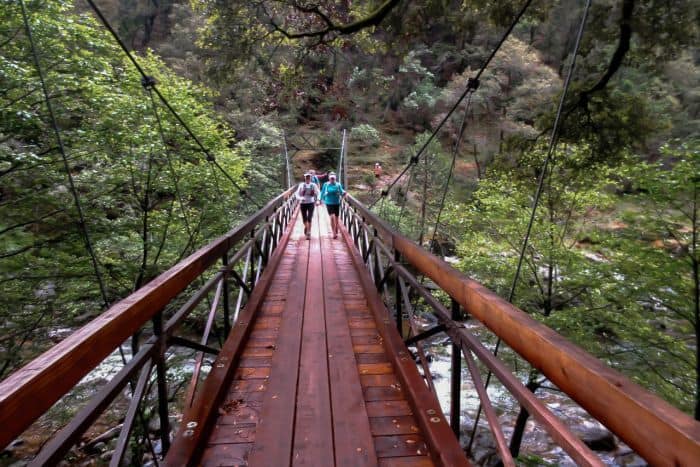Broadcast on ABC Radio National’s Life Matters on February 4, 2016.
Extreme sports were once considered the exclusive domain of men. Nicky Redl explores the trailblazing world of female ultrarunners.
Online story:
The sport of ultra trail running has boomed in recent years, with 80,000 ultramarathon finishes in the USA alone last year.
The races are anything longer than the conventional marathon of 42 kilometres—hence the ‘ultra’ prefix.
Often, the races span 100 miles or more. They can take over a day to run in their entirety.
They’re single-stage races, too. On hundred-mile races, cut-off times generally kick in after 30 hours.
That means participants don’t generally get time for much more rest than a sit-down or a quick nap to rest.
The famous Ultra-Trail du Mont-Blanc series in the European Alps attracts about 10,000 runners across various distances each year.
While the sport is still male-dominated, the number of female competitors has in recent years risen far more than the number of men.
In the USA, women now make up nearly a third of the ultramarathon field.
So what makes extreme distances so attractive to women? One way to find out is to ask a genuine ultramarathon trailblazer
Ann Trason, an American runner, is a legend in the ultrarunning community. She has broken 20 world records. She’s never forgotten the first time she trained on the Western States Trail.
‘It captured something in me. I just felt it was in my blood. I can’t explain the beauty, the freedom.’
Trason started running ultramarathons in the ’80s, when women were still a much rarer sight on the trail. For her, long-distance running is a way of life.
‘My favourite runs are things where I run across the Sierras by myself,’ she says.
‘I would just do these runs and mail my clothes somewhere and spend the night and then run back to my car a different way. That’s my favorite thing to do in the world.’
Long-distance running hasn’t always been inclusive of women. Until 1971, women were banned from the world famous Boston Marathon.
When Kathrine Switzer ran it in 1967 after not identifying as a woman on her race registration the race director tried to physically force her off the course.
Despite finishing the race, Switzer was disqualified because of her gender.
In the ’80s Trason found most people very supportive, although some still had difficulty getting used to female ultrarunners.
One male trail running friend told her that she didn’t have the right genes for what he termed a ‘man’s sport’. Trason would later run into him during the Western States race.
‘When I passed him, I asked him how his genes were doing,’ she chuckles.
Trason won the women’s division that year and every year she ran it thereafter—a total of 14 times.
Here’s a biological quirk: the longer the race, the better chances women seem to have at narrowing the gap to male top runners or even winning races outright.
At the Sydney marathon, the female winner is usually at least 20 minutes behind the male winner. For an ultramarathon covering four times that distance, you’d naturally assume the time difference would multiply—but that’s not always the case.
At the Western States 100, Ann Trason twice came second overall—once, she was minutes behind the male overall winner.
In the 135 Mile Badwater Ultramarathon, where competitors run in boiling temperatures of up to 50 degrees through America’s Death Valley, US competitor Pam Reed crossed the finish line ahead of the fastest men twice.
Making time to train and compete is a challenge in itself, especially when raising a family—but some competitors just get them involved.
Ana Braga-Levaggi, 56, has completed eight of the toughest 100-mile races in the USA. Her husband—a keen cyclist—provides more than moral support. ‘My husband is very involved and hands on, whether he paces me or in giving me what I need.’
It’s a family affair: her daughters time her breaks and make sure she keeps moving, and find plenty of inspiration in their mother’s achievements.
‘Ultrarunning brings us together. My perception of my mom transcends from personal chauffeur/macaroni maker into hero,’ Braga-Levaggi’s daughter Bella wrote in a college essay.
The USA is still the world’s ultrarunning hub, but the sport is growing fast in Australia, with over 100 annual ultras.
The Ultra-Trail Australia is a trail running event that attracts thousands of people to the Blue Mountains for its 100 and 50 kilometre distances each year.
One hundred miles isn’t the limit, either. Australia’s Coast to Kosciuszko ultramarathon is 240 kilometres long, from Twofold Bay in New South Wales to the summit of the country’s highest mountain, Mount Kosciuszko.
Age plays less of a defining role in ultramarathons than it does for other styles of running. Meghan Arbogast holds the Western States record for women over the age of 50 and still finishes races ahead of younger competitors.
She believes older runners have some advantages in endurance sports.
‘Partly, it takes the body a long time to adapt and get that strong,’ she said at a trail running training camp on the Western States course.
‘I think we get mentally more tough the older we are.’
With age, runners can also become more patient and learn to pace themselves better over long distances.
Arbogast runs 100 miles a week and is still as fast as she was years ago.
‘There are a lot of 40 or 50-year-old women who are thinking, “She’s still doing it. I don’t have to slow down when I’m 45 or 50 or 55, I can still do this,”‘ Arbogast says.
‘That matters to me.’
